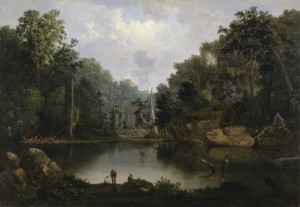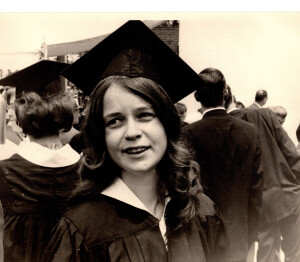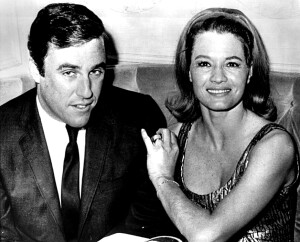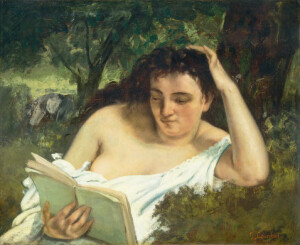I remember the book I held in my hands that day. I remember the feel of its time-warped, water-stained pages. I remember its murky, moldy river smell, call it the book’s bouquet, suggesting years of storage on the banks of the Seine. Had I bought it then, I could feel and smell it now and know it from a hundred other books in my library. Its touch and bouquet would transport me into the midst of its terroir, several blocks of the Latin Quarter only a stone’s throw from the river, where it was printed and published, sold and re-sold, read and debated, discarded and read again in other hands — for three centuries.
Like the fish that got away, it looms ever larger and more mysterious just below the surface of my memory.
It was a 1745 edition of Voltaire. The price was 45 euros. I had as much cash in my pocket, but that seemed exorbitant for a book slowly composting like leaf-mold. Voltaire never meant that much to me. I was hoping to stumble upon an affordable antiquarian volume of Rabelais. Still, 1745 is 1745, and I liked the smell of leaf-mold.
“You don’t need to buy books,” Ms. Modigliani said after snapping the photo. “You don’t need to read them. Just touching books is what you really want.”
She was right. Until then, she’d always been a little dubious about my passion for collecting books. Charitably, she overlooked the impracticality, the apparent futility of a half-blind man acquiring (and housing) countless printed volumes he could never read. Patiently and generously, she read to me more than a few obscure books over the years. She could have read this one in French. As we made our way through the bookstalls along the Seine, she gamely surveyed the titles for me, translating snippets of this text or that. She almost succumbed to the passion herself as she haggled with bouquinistes on my behalf. Nonetheless, she couldn’t ignore the incongruity that I might pay more for a musty old book than she would spend for chic new shoes. It seemed, well, profligate.
So it was a moment of deep insight and acceptance when Ms. Modigliani said, “Just touching books is what you really want.” I felt understood then — and loved. How could buying any mere physical object compare with that?
I didn’t buy the book. We walked down Quai des Grands-Augustins to the Institut de France, then turned left onto Rue de Seine. Ms. M lived there once upon a time when she worked as an au pair.
Suddenly, there was Voltaire! Chancing upon his statue unexpectedly must have been an omen. I took a picture as if to prove to myself that I truly was a free agent in this situation. Then I heard a cold marble voice mocking me. Maybe it was an oracle from the terroir. “You should have bought the book!”
![Mark Willis peruses a 1745 volume by Voltaire at a bouquiniste book stall on the banks of the Seine in Paris. He wears a brown leather jacket and checkered flat cap. He holds the open book in his hands. Rows of old books are seen on shelves behind him. [2005 photo by Ms. Modigliani]](https://www.ghostturtles.com/wp-content/uploads/2023/03/mw_bouquiniste_05-1024x768.jpg)
![A white marble statue of Voltaire, the 18th-century French writer and philosopher, stands on the side of Rue de Seine in Paris. Green foliage is seen in the background. [2005 photo by Mark Willis]](https://www.ghostturtles.com/wp-content/uploads/2023/03/voltaire_seine_05b.jpg)


![Sandhill cranes land on Platte River sandbar roosts west of Rowe Sanctuary’s Iain Nicolson Audubon Center southwest of Gibbon, Nebraska. [Photo by Lori Porter| Kearney Hub]](https://www.ghostturtles.com/wp-content/uploads/2015/03/sandhill_cranes_kearneyhub_032015-300x225.jpg)
![An endangered Whooping crane takes flight. Yhe large bird has a 7-foot wingspan. It is all white except for black wing tips and face markings. In this photo its long neck stretches forward; its wings sweep upward; and its black legs trail straight behind it. [Source: International Crane Foundation]](https://www.ghostturtles.com/wp-content/uploads/2023/03/Whooping-crane-eastern-ICF-080622-300x157.jpg)

![Mark Willis peruses a 1745 volume by Voltaire at a bouquiniste book stall on the banks of the Seine in Paris. He wears a brown leather jacket and checkered flat cap. He holds the open book in his hands. Rows of old books are seen on shelves behind him. [2005 photo by Ms. Modigliani]](https://www.ghostturtles.com/wp-content/uploads/2023/03/mw_bouquiniste_05-300x225.jpg)


